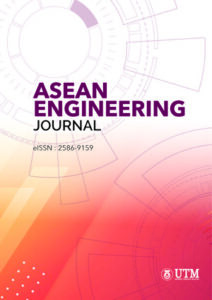A RATIONALIZED SEISMIC DESIGN METHOD FOR BUILDINGS IN EARTHQUAKE-PRONE DEVELOPING COUNTRIES
DOI:
https://doi.org/10.11113/aej.v11.18101Keywords:
Buildings, Probability of failure, Quality control of construction, Reduction factor, Seismic design code, Yield acceleration.Abstract
In general, the US codes such as the UBC-97 and ASCE-7 are widely used in developing countries including Myanmar, Syria, Philippines and so on. When the current seismic design guideline based on the UBC-97 and ACI 318-99 in Myanmar is assessed, several problems can be found in the following items: firstly, the fundamental period is not checked in modeling; secondly, reduction factor R is introduced a priori for the base shear estimation. And finally, a limit state assessment is done only for Design Basic Earthquake (DBE) but not for other design earthquakes. As a result, adequate yield strength is not checked for Maximum Operational Earthquake (MOE). Then there is no way to assess the seismic safety of the ultimate limit state for Maximum Considered Earthquake (MCE). In order to solve these problems, a rationalized seismic design method for earthquake prone developing countries is proposed. A new seismic design method is developed for MOE and MCE with adequate yield acceleration and typical period of the building estimated by using pushover analysis. A simplified procedure to estimate the inelastic response for a given design spectrum is also proposed. Finally, this design procedure can provide a rational method to assess the seismic safety for the ultimate limit of the building.
















